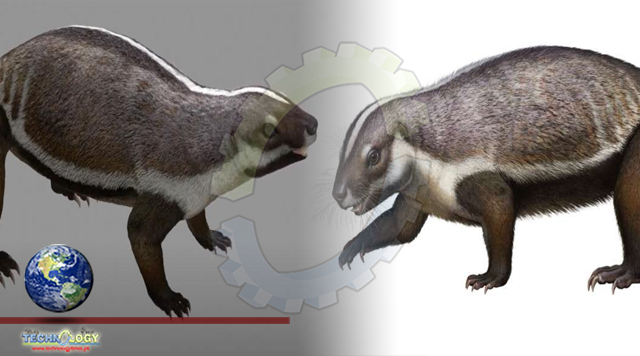The mammal had more trunk vertebrae than other relatives, with the muscular hind legs placed in a very extended position (like modern crocodiles), with strong forelegs bent under the body (as is the case with most mammals today).

Scientists have described a strange mammal that was named the “crazy animal” – he lived 66 million years ago. Scientists’ study provides new insights into the evolution of mammals from the southern supercontinent of Kondwana, which today includes Africa, South America, Australia, Antarctica, the Indian subcontinent and the Arabian Peninsula.
An international team of researchers led by Dr. David Cross (Denver Museum of Nature and Science) and Dr. Simon Hoffman (New York Institute of Technology) in Madagascar in the late Cretaceous (145 – 66 million years ago).
The atalatorium, which means “mad beast” in Malagasy and Greek, is described on the basis of an almost complete, remarkably well-preserved skeleton found in the southern hemisphere. According to scientists, the Adorium is a “giant” against the backdrop of most mammals that lived during the Cretaceous.
The mammal had more trunk vertebrae than other relatives, with the muscular hind legs placed in a very extended position (like modern crocodiles), with strong forelegs bent under the body (as is the case with most mammals today). It had front teeth like rabbit and hind teeth, which were completely different from other known mammals, living or extinct, and had a strange gap in the bones on the surface of the face.
The complete and perfect preservation of the skeleton of the Adalatarium sheds light on how the Kondwanatis are and how they lived.
“If we knew about the skeletal anatomy of all living and extinct mammals, it would be hard to imagine that mammals such as Adalaterium could have evolved: new evidence violates many existing theories and rules.” Said Cross.
The creature’s reconstruction looks like a normal badger on the outside, but it’s hard to figure out how it moved.
“Its front tells a very different story than its back.” – Scientists say.
The tip of the animal indicates that its body was a hybrid between living mammals and their ancient relatives. The mammal weighed about 3.1 kg, which was the largest in its time – the largest compared to the main shrews and rats that lived during the Cretaceous.
The geological history of Kondwana provides clues as to why the Adalatium is so bizarre.
This creature was found in the rocks until the end of the Cretaceous about 66 million years ago. At the time, Madagascar was already an island separated from Africa by 150 million years and the Indian subcontinent by more than 20 million years.
“The atelier is an important part of the biggest mystery about the evolution of early mammals in the Southern Hemisphere, of which other areas are still missing.” – Hoffman explained.
As the “Apostrophe” announced, Scientists at Oregon State University recently discovered The mysterious extinct flower is preserved in an amber piece… When dinosaurs roamed the earth, Valviloculus pleurisis blossomed in the Cretaceous.
Originally published at Press stories